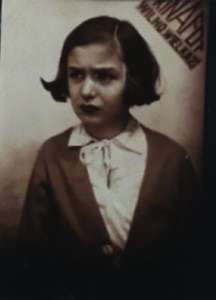Months ago, the national library in Vilnius, Lithuania announced that a trove of rare Jewish documents – more than 170,000 pages that were thought to have been lost in the Holocaust – had been rediscovered.
Some of those papers are currently on exhibit at the YIVO Institute for Jewish Research in New York. YIVO, which was founded in Vilnius (then known as Vilna), hid the documents in 1940 in the national library.
The organization moved to New York after the war, its staff believing the Nazis destroyed the papers. Actually, they were saved by a gentile librarian, Antanas Ulpis, who, at risk to his own life, squirreled them away in the basement of a church in Vilnius.
If you think these are just fragments of Torah and Talmud, boy! Are you wrong.
The trove includes:
• An 18th century manuscript on astronomy with drawings and descriptions of the solar system and calendrical charts.
• Lost and unpublished manuscripts from poets Chaim Grade and Avrom Sutzkever, and novelist Leyzer Volf.
• Letters penned by famed Yiddish writer Sholem Aleichem, including one from a German spa in 1910.
• A postcard from modern artist Marc Chagall.
• The Autobiography of Bebe Epstein, a fifth-grade girl, written between 1933-34, when she submitted it to YIVO’s youth autobiography contest.
All of which shows that Jews led much fuller lives than what you see in Fiddler on the Roof.
Abigail Glogower, curator of Jewish collections and the fledgling Jewish Community Archive at the Filson Historical Society in Louisville, especially loves that young Bebe’s book survived the Shoa.
“She was just a normal kid having a normal life from way back when,” Glogower mused. “It’s fascinating, just the texture of everyday life.”

Bebe Epstein, a fifth-grader in Lithuania from 1933-1934, wrote her autobiography, which she submitted to a YIVO youth writing contest. (photo courtesy of YIVO)
The whole trove will shed new light on how Jews lived in Eastern Europe before the war. As David E. Fishman, a professor of Jewish history at the Jewish Theological Seminary, who traveled to Vilnius to see the papers, told The New York Times, “These are gold.”
There’s a lesson in the discovery of these papers: A community’s past can be easily wiped away if it’s not careful. It’s a lesson we would do well to learn here.
And we are.
Glogower is currently working on a project to archive and digitize 75 years’ worth of Jewish Hospital documents,
And my predecessor, Shiela Wallace, in partnership with the Filson, is working with the archive governance committee at the Jewish Community of Louisville to identify and preserve historically significant JCL papers. That project could eventually involve digitizing back copies of Community.
Both projects are being supported by a two-year $275,000 grant from the Jewish Heritage Fund for Excellence.
The Filson already has smaller collections of Jewish documents, including early records of two local B’nai B’rith lodges, the papers of whiskey magnate and philanthropist Isaac W. Bernheim, and Rabbis Joseph Rauch (Adath Israel) and Martin Perley (Temple Brith Sholom and later, the Human Rights Commission).
So far, the Filson collection is small – just five cubic feet of papers, according to Glogower. But it has dedicated 400 feet of shelving in its facilities as the archive grows.
There are other sources of Jewish history in Louisville. The Temple also has materials related to Temples Adath Israel, Brith Sholom and the Reform movement. The Ekstrom Library at the University of Louisville has collections related to Bernheim, the Young Men’s Hebrew Association, journalist Herman Landau and Professor Lee Shai Weisbach.
“I am thrilled to be helping build bridges between them,” Glowgower said, “to increase awareness of and access to the rich and varied history of Jewish Louisville.”
Even though preserving Jewish history here is in its early stages, it’s never too soon to get started. Louisville is not Eastern Europe, but documents can still be lost.
Glogower noted that many Jewish Hospital records were destroyed in the flood of 1937. In addition, a significant source of Jewish Louisville history – oral history – is vanishing as the community ages and shrinks.
People who forget their past risk losing their identity. Without that anchor, the word “Jew” becomes hollow, devoid of any meaning.
History adds flesh to the metaphorical bones we use to describe ourselves.
“Sometimes, it’s easy to believe something happened in a certain way,” Glogower said of the past. “New material can complicate what we think we know about Jewish history.”
That’s a good thing; new material invites us to rediscover who we are.
That’s what the Vilnius discovery promises to do. Who knows what these Louisville projects will do?
(Lee Chottiner is editor of Community.)




